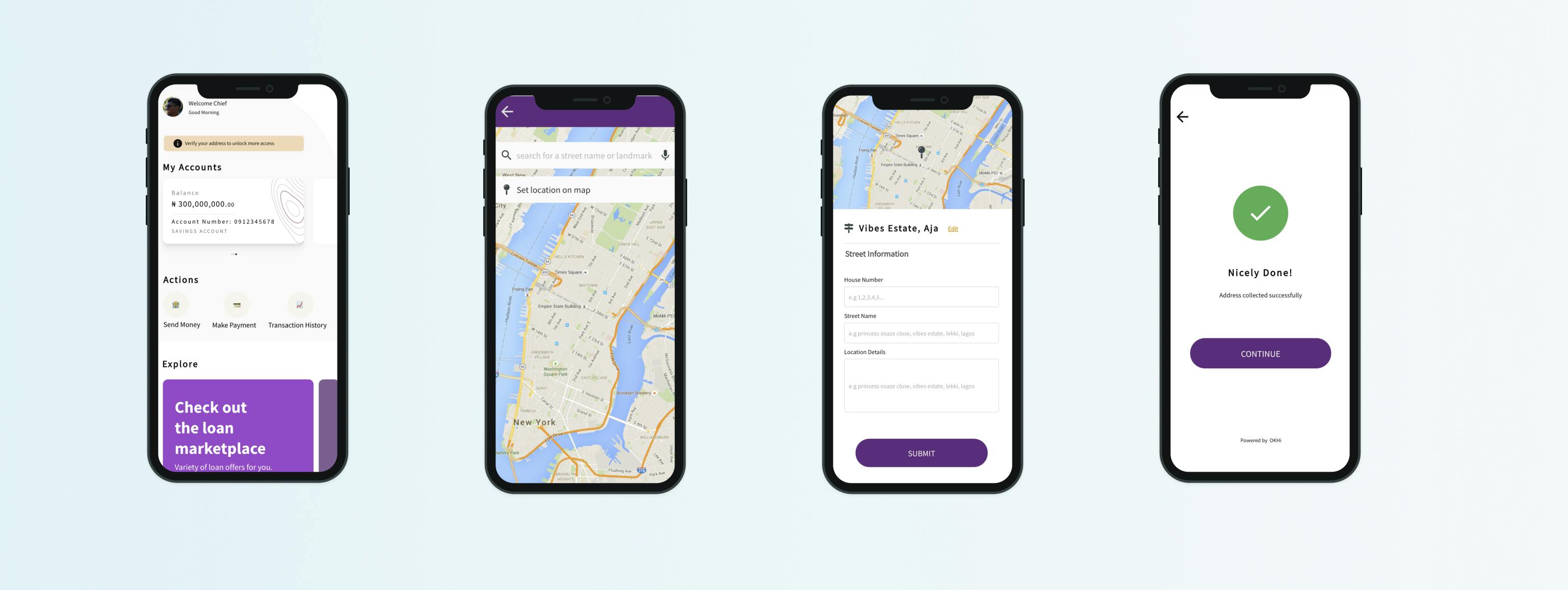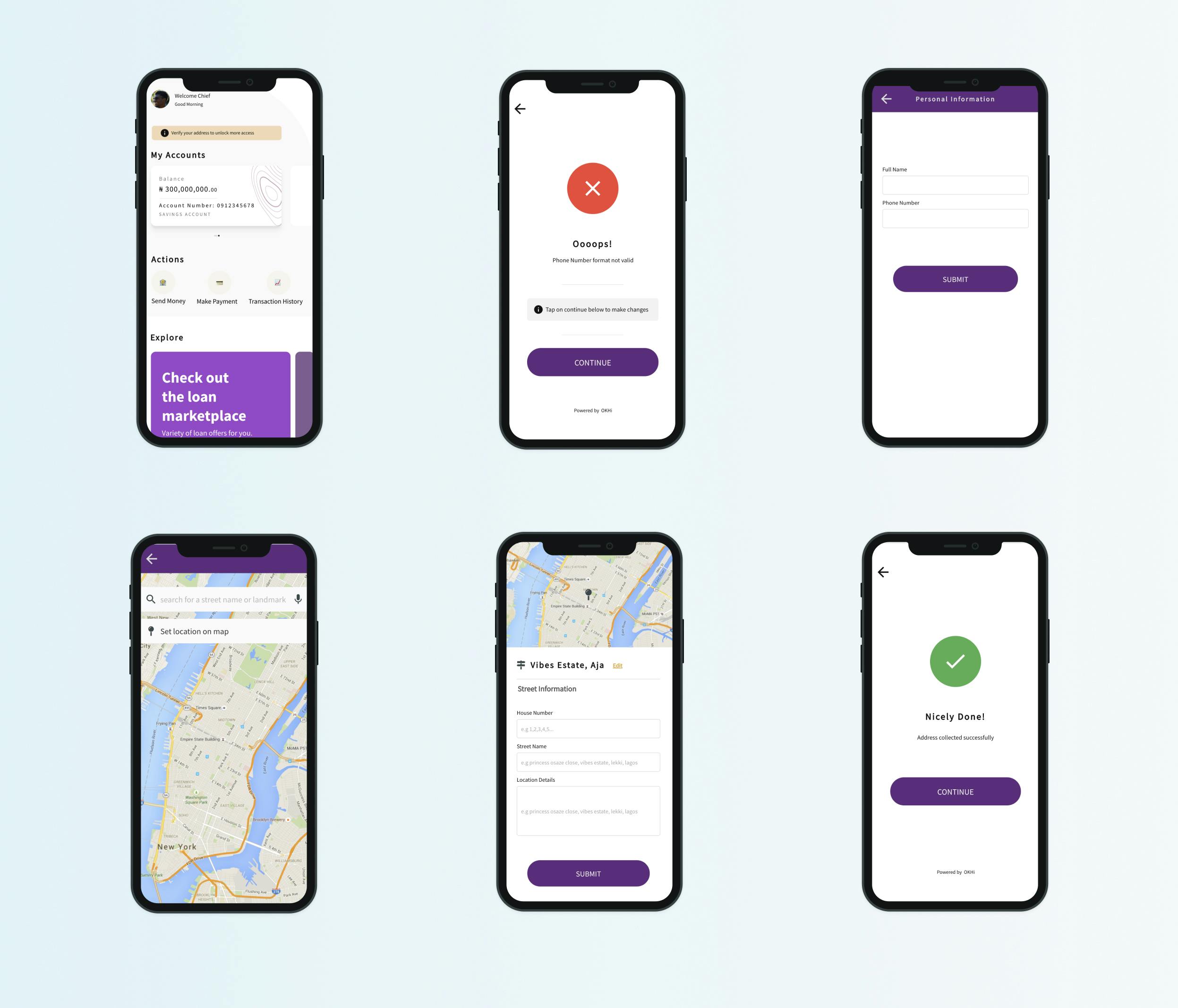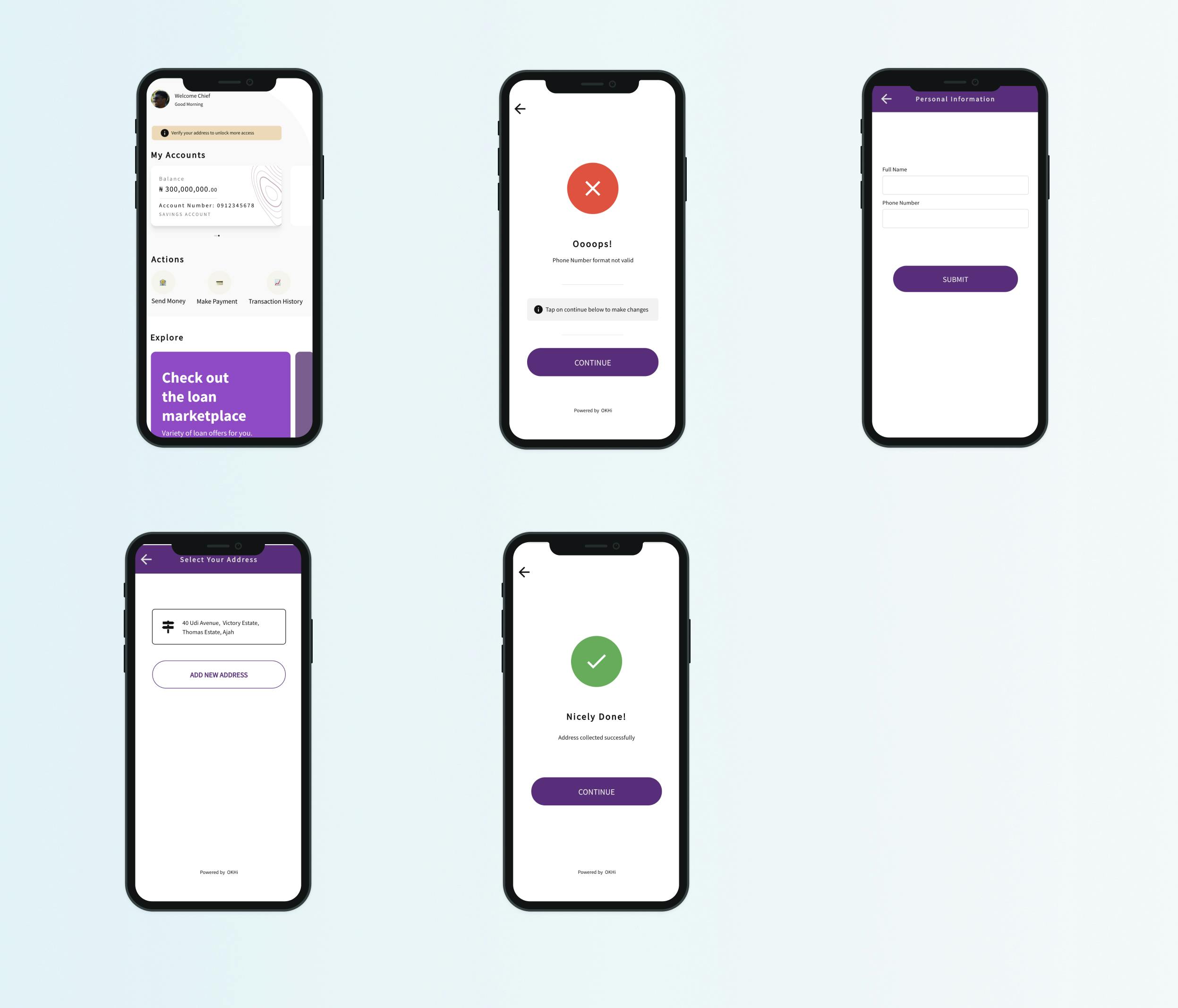Share
Explore

 Designing OkCollect 2.0: Case Study
Designing OkCollect 2.0: Case Study
A case study on designing a movie recommendation application
Introduction
OkCollect is a product of OkHi - a JavaScript and mobile SDK - that enables any business to collect accurate address.
Project Brief
As the Lead Designer of OkCollect 2.0, design an optimal product for financial services apps by focusing on an efficient and delightful address collection user experience considering new and repeat users.
Feature Set
User Story
Existing User
As an Okhi user, I want to be able to reuse my saved address on a financial institution’s platform for verification so I can get access to more services.
Requirements:
Acceptance Criteria
I know this is done when:
Corner Cases
New User
As a user, I want to be able to submit my address on a financial institution’s platform for verification so I can get access to more services.
Requirements:
Acceptance Criteria
I know this is done when:
Approach
In his book “Talking to Humans’, Gill Constable popularized a user/customer-centric approach that I adopted for this project. The fulcrum of his approach is embedded in a design thinking method of challenging assumptions made in risk hypothesis from the purview of the customer.
Riskiest Hypothesis
User Testing OkCollect 1.0
To keep my research as short as possible due to the timeline, I reached out to people around me to try out the current OkCollect via the demo store shared in the assessment.
The purpose was to determine the following:
Data Gathering
On gathering responses, I picked important insights and translated them into statements so I can establish a vision of how to handle feature implementation.
User’s Problem Statements
User Task Flows
In the wireframe user task flows below, I prepared a routine for adding new address, re-using an existing address, incompatible phone number format.


Tradeoffs and Key Design Decisions
Optimizing For Speed and Accuracy
On optimizing for speed and accuracy, I opted to abstract some of the complexities that might cause friction for users and may not be accurate representation of the current state of location.




3. Invalid Phone Number Format: A corner case I preempted after reading the was a scenario when the phone number passed from the financial institution is in the wrong format. I took care of this by designing a flow where the phone number can be captured in the correct format and validated against the OkHi database to check if the record exist or not so as to determine the correct route for the user.




Conclusion
There will always be iteration for any product, because there’s no such thing as the best product, but there’s always a better product.
The plan is to always talk to customers and further iterate on the product to get a better version.
Want to print your doc?
This is not the way.
This is not the way.

Try clicking the ⋯ next to your doc name or using a keyboard shortcut (
CtrlP
) instead.